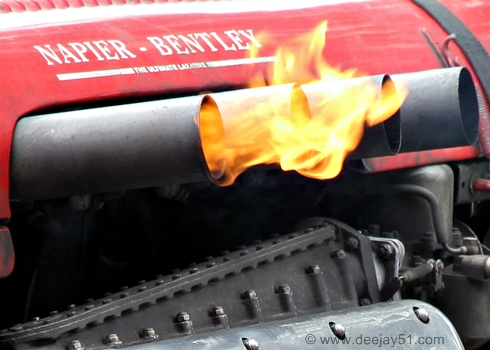J.A.W. wrote: ↑05 Apr 2018, 14:00
So Johnny, is this one an 'April fool'?
Or is it - a development of the Aussie bulit.. ah I mean built.. 'Carbury' - Royal Oilfield-based V-twin machine?
( Though it does also resemble an 'S&S' H-D clone, morphed with a Vincent-like top-end)..
Apparently not (an April Fools joke) - Most folk nowadays know the Mugen name from its electric racebikes, particularly those run at the Isle of Man TT each year. But the firm has a fascinating history, closely linked with Honda cars and bikes. Mugen (meaning ‘infinite’ or ‘unlimited') was set up by Soichiro Honda’s son, Hirotoshi, in the early 1970s, and has produced aftermarket parts and tuning packages for road and race Hondas, on both two and four wheels, ever since.
Now, though, Mugen has shown a new engine concept on its Tokyo bike show stand. The design – for a four-valve OHV air-cooled 1,400cc V-twin – has its roots in a near-mythical bike Mugen built in the 1970s, the MRV1000. That prototype used a one-off 1,000cc twin-carbed engine design, which looked a lot like the classic Vincent V-twin engine from the 1950s. But the MRV would have been too expensive to build back then, and never made it into production.
Fast forward forty years, and Mugen is now thinking about doing something similar again. A mock-up of an all-new V-twin engine sat next to the new Mugen electric TT racebike on the Mugen stand, with a design drawing of a sleek naked roadster and a request for feedback on whether the firm should make the new ‘MRV1400’.
from -
http://www.visordown.com/motorcycle-new ... in-concept
I found it interesting because of their F1 history:
In 1991 Mugen prepared Honda V10 engines for Tyrrell but the following year these engines were renamed Mugen MF351H and were transferred to the Footwork team, with drivers Aguri Suzuki and Michele Alboreto. In 1993, Mugen remained affiliated with Footwork and created a B version of the MF351H, used by Aguri Suzuki and Derek Warwick.
At the end of the year, Mugen switched to Team Lotus with plans for a new Lotus 109. The team - with drivers Johnny Herbert and Pedro Lamy (later replaced by Alessandro Zanardi) - was underfunded and the 109 chassis was late arriving. The Mugen engine, codenamed ZA5C, was not able to show its full potential and, after Lotus closed at the end of the year, Mugen switched to the Ligier team, which was then being run for Flavio Briatore by Tom Walkinshaw, with drivers Olivier Panis, Martin Brundle and Aguri Suzuki. The 3.0 L engine, conforming to the new regulations, was codenamed MF301H. The connection with Ligier resulted in Mugen's first Formula One victory at the 1996 Monaco Grand Prix with Panis at the wheel.
The team was taken over by Alain Prost in 1997, and the newly named Prost Grand Prix ran MF301H-B engines with Jarno Trulli leading the Austrian Grand Prix before suffering engine failure. With Prost establishing a relationship with Peugeot in 1998, Mugen looked for a new partner and reached a two-year agreement with Jordan Grand Prix for which Mugen produced the MF301H-C engine. The 1998 season was not a success until Spa-Francorchamps, when Jordan drivers Damon Hill and Ralf Schumacher scored a 1-2 finish.
The 1999 season resulted in further success with Heinz-Harald Frentzen winning twice, but then the Honda Motor Company announced that it would be returning with its own engines in 2000 with British American Racing. Mugen pulled out of F1 at the end of the 2000 season leaving Honda to supply the engines to Jordan as well.
The giveaway was that they had separate inlets.





